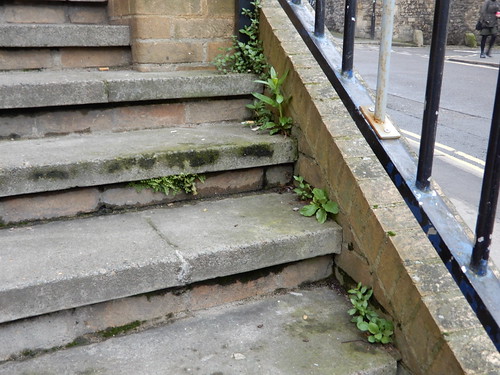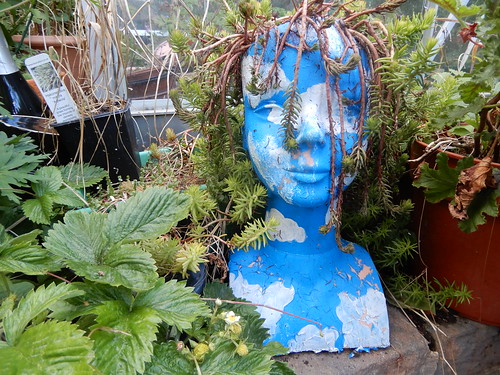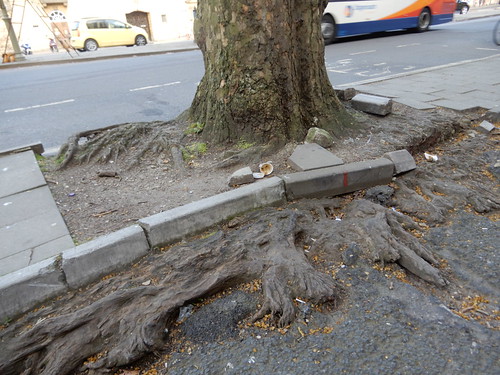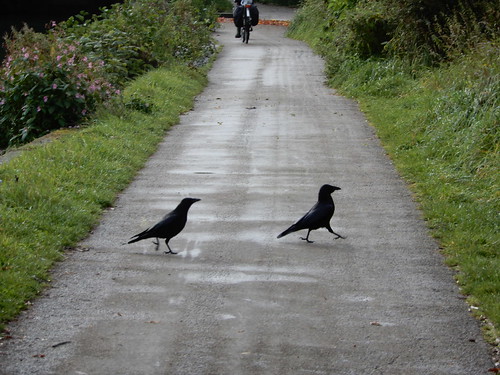As a pet owner, one of my regular activities is deburring. In comes one of the furry ones, pleased as punch, carrying a little freight of seeds and burrs discovered in my garden, the next garden, the verge, the scrub behind the wheelie bins at the back of the estate.
They find them at all times of year, even the depths of winter.
The standard weeds and seeds I brush from everything are like a skipping rhyme: Creeping Buttercup, Couch Grass, Enchanter's Nightshade, Barley Grass, Wild Oats, Alkanet, Euphorbia, Herb Robert.
The plants my garden would be, if I'd just stop planting all that other stuff in them.
travelling in space and time
Plants, the odd exception notwithstanding, are rooted to the spot.
But they travel far and often very fast, either generationally, in the form of seeds, or as fragments, as many parts of a plant can can take root spontaneously. They travel by wind and water, and in the stomachs of animals. They travel on you, on me.
Don't think they travel on you? Think again. Scientist carefully vacuumed samples of clothes and bags on visitors to Antarctica, and found (in common with most animals, the wind, duck's feet and indeed rocks) humans are a vector for plant propagation.
Visitors carrying seeds average 9.5 seeds per person, although as vectors, scientists carry greater propagule loads than tourists. Annual tourist numbers (∼33,054) are higher than those of scientists (∼7,085), thus tempering these differences in propagule load. Chown et el 2012
Even among the small numbers of seeds I handle, many of them are as small as dust. The ones that come from my orchids and airplants - smaller. Me and my furry assistants scampering round in service of our vegetative overlords, scattering seeds as we go.

Of course it is always important to read the research in the context of its funding. In this case, this useful summary provided by IATTO (International Association of Antarctica Tour Operators) is instructive. But it's also important to look at it in the context of prejudicial attitudes.
a world of rats and sparrows
Adverts for cruising to Antarctica bookend my experience of wildlife documentaries nowadays. The value of knowing something exists is intensified by experiencing it, seeing it, and yes - smelling it; and so we go, and so we look, and dandelions bloom in our footprints.
There's a pile of concern, but it brings discomfort, to me; a lot of the guidance and guidelines and studies come down to; I should be allowed to travel. But not you.... and that is a difficult position to take.
Wind blows, birds fly, humans travel; and all of us with seeds in our feet, our feathers, our hair, under our nails and in the air in our lungs.
We breath in the fresh air of a new city, and breathe out orchids.

















































